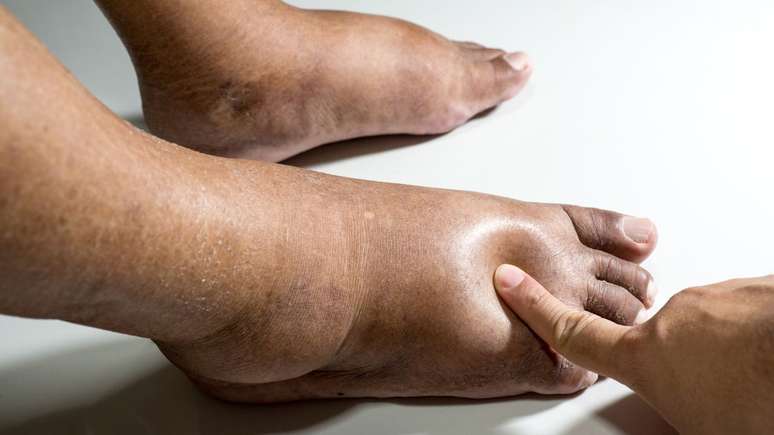Learn about the characteristics of lipedema and lymphedema and understand the difference between the conditions
Often confused, the lipedema and the lymphedema They are distinct diseases. The first is characterized by the accumulation of fat in the arms, thighs and legs. In addition to fat, the appearance of bruising (purple welts) in the affected areas, sensitivity and pain to touch, feeling of heaviness and tiredness in the legs, fatigue and may also impair mobility is common.
The diagnosis of lipedema is clinical and depends on a good anamnesis (conversation with the patient) and physical examination. Complementary tests such as ultrasound and MRI can complement the physical exam, assisting in diagnosis and treatment.
According to plastic surgeon Dr. Fernando Amato, member of the Brazilian Society of Plastic Surgery (SBCP), lipedema cannot be cured, but it is a condition in which it is possible and necessary to restore the patient’s quality of life.
Lipedema treatment
Treatment of lipedema is individualized and depends on the stage of the disease. Treatment options may include medications, supplements and vitamins, diet, and conservative therapies such as physical therapy, lymphatic drainage, use of compression stockings, and weight control.
“When the clinical results show no changes, or show partial changes, preferably with stabilization of the symptoms, it may be recommended to perform liposuction, a surgical technique to remove excess fat,” explains Dr. Fernando Amato.
In the case of liposuction, the specialist explains the importance of respecting the limits of fat to be removed during the operation, which must be between 5% and 7% of the patient’s body weight.
Find out what lymphedema is
Lymphedema is linked to an insufficiency of the lymphatic system and is characterized by the abnormal accumulation of lymphatic fluid in some areas of the body such as arms and legs, causing persistent swelling.
“Lymphedema can have a primary origin, that is, when a person is born with a congenital malformation that compromises the lymphatic vessels. Secondary lymphedema can be caused by different situations, such as oncological surgeries, inflammatory and infectious processes that block the normal flow of lymphatic fluid, causing swelling”, specifies Amato.
Treatment of lymphedema
Lymphedema has no cure, but it can be treated. Manual lymphatic drainage, different from that applied in beauty centers and carried out by a specialist expert in the vascular and lymphatic system, is one of the recommended therapies.
Furthermore, local skin care and compression therapies are also part of the treatment. “It is very important to highlight that the most advanced stage of lipedema can lead to lymphedema due to damage to the lymphatic vessels due to chronic inflammation. Although they are different, they can occur together”, concludes the specialist.
Source: Terra
Ben Stock is a lifestyle journalist and author at Gossipify. He writes about topics such as health, wellness, travel, food and home decor. He provides practical advice and inspiration to improve well-being, keeps readers up to date with latest lifestyle news and trends, known for his engaging writing style, in-depth analysis and unique perspectives.








